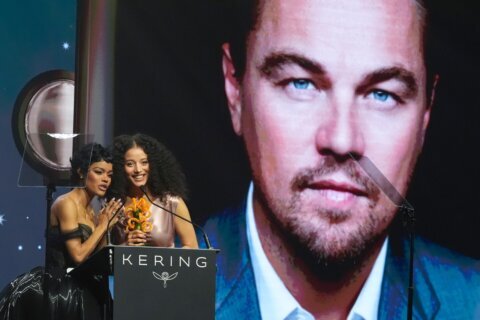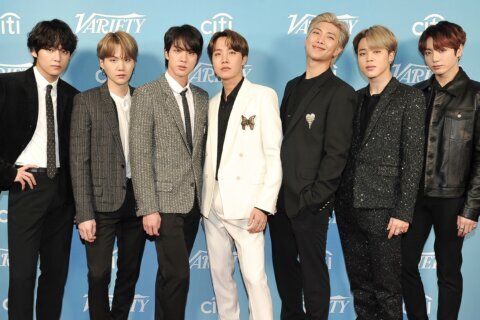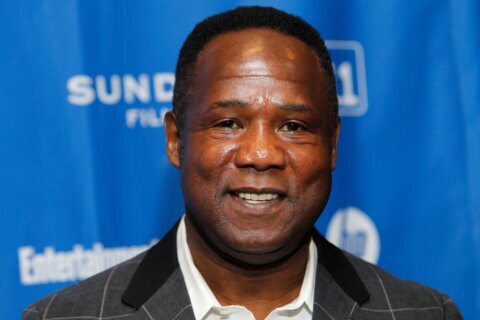America’s most prolific documentarian is taking on America’s most mythic author.
Ken Burns will host a Georgetown University panel on March 18 to discuss the life of Ernest Hemingway, tackled in his three-part PBS series “Hemingway” on April 5-7.
“He’s got this pretty convenient facade, but it’s also pretty thin and you want to go beyond it — and that’s what we tried to do in this three-part, six-hour series,” Burns told WTOP in a Zoom call from his New Hampshire barn. “It’s about as deep a dive that we’ve gone into anyone’s psychology that I can remember in 40 years of doing this.”
Known for the “Ken Burns Effect” of a camera panning and zooming across a still archival image, the real Ken Burns “effect” is his contagious desire to learn more about topics ranging from the “Civil War” to “Baseball,” from “Jazz” to “Country Music.”
How much did he know about Hemingway going in?
“I knew a little bit,” Burns said. “Starting in high school, I was exposed to short stories and novels like ‘The Old Man and the Sea,’ and I read more as an adult, but there was a curiosity in the sense that there was more than meets the eye. He was an iceberg.”
Co-directed by Lynn Novick, the series brilliantly separates the man from the myth.
“That myth is actually true, he is a great lover of nature … he is a macho guy in various ways, he is a brawler, he is a big drinker, he is a deep sea fisherman and a big game hunter,” Burns said. “What’s behind it is much more interesting, a vulnerability, a curiosity about how women think, a gender fluidity that will be stunning to be people.”
That gender fluidity includes his mom dressing him and his siblings as both sexes.
“There are short stories that he wrote 100 years ago that are stunning in their ability to get inside, as the writer Edna O’Brien says, the skin of a person of the opposite sex, this kind of androgyny you have to perform,” Burns said. “All of his wives were asked to cut their hair and he grew his long and they would do role reversals in their sex life.”
The documentary also explores how World War I affected his psyche.
“Nobody fully appreciates what happens to people in war, what it does to them,” Burns said. “He was nearly killed, he spent months in a hospital, had hundreds of pieces of shrapnel embedded in his legs, he nearly died, and he came back both proud of it and beginning to lie and expand what happened to him, but also deeply troubled by it.”
It also shows his lavish time in Paris with the likes of F. Scott Fitzgerald.
“He arrives in Paris and, for a kid, ends up with all these great mentors,” Burns said. “There’s lots of booze, there’s lots of ideas and he’s holding his own. He’s movie-star handsome, he’s written these short stories and people say, ‘You should write a novel.’ … John Dos Passos, a fellow Paris writer, says, ‘You’re the king of the fiction racket.'”
That’s how Episode 1 ends, on a career high note, albeit with a tragic mention of his father’s suicide, foreshadowing Hemingway’s own suicide at age 61 in 1961.
“[He’s] a man beset by personal demons,” Burns said. “A history of mental illness in the family, suicides in the family, PTSD from World War I and other situations, a series of traumatic brain injuries throughout his life, alcoholism, the self-medications necessary to keep going. You don’t know the one thing that results in his tragic ending.”
After the dust settled from his personal train wreck, future authors were left to sift through an undeniable body of work. As commentator Tobias Wolff says in the film, Hemingway rearranged the furniture that every author sits upon today. Likewise, commentator Abraham Verghese says you have to either kill his ghost or embrace it.
“Many of us are still addicted to [him], and some of us kill that and want to be the opposite, but that means he’s still influential,” Burns said. “If you want to be not a Hemingway, you’re speaking volumes about the power of Hemingway, almost as much if not more than if you’re trying to emulate him, which no one can do.”
Highbrow and lowbrow alike can relate to his deceptively accessible prose.
“[After] the very complicated, complex and difficult to read prose of James Joyce and William Faulkner, Hemingway, every bit the modernist, dared to impersonate simplicity,” Burns said. “He wrote these very spare sentences that represented his early training in music, the composition of Bach, counterpoint and repetition.”
His writing style was also shaped by his early journalism career.
“[He was] a cub reporter for the Kansas City Star, known for their spare writing: don’t use adjectives, just state the facts, use declarative sentences,” Burns said. “It permits him to invest all this meaning in seemingly simple things and it’s just catnip if you’re a reader because of what he’s able to do without all the other ornamentation.”
The result is at least four masterpieces: the bullfighting of “The Sun Also Rises” (1926), the World War I grief of “A Farewell to Arms” (1929), the Spanish Civil War of “For Whom the Bell Tolls” (1940) and the marlins of “The Old Man and the Sea” (1952).
“Four really good novels, you can quibble about which one you like or don’t like,” Burns said. “He wrote ‘Old Man and the Sea’ in one of the worst down periods of his psychological, physical and emotional life. It was from that the Nobel committee awarded him the Nobel Prize for Literature.”
What was Hemingway’s best work? The question is almost beside the point.
“It’s really about process,” Burns said. “While you can finish something and say this is my best or most important, it really doesn’t matter. The covers of the books and their titles are what you and I absorb, but what the writer does is there’s some sort of continuum. … It’s not the thing you’ve done, it’s the thing you’re working on.”
What does Burns consider to be his own magnum opus?
“When ‘Civil War’ came out, I thought it was the best thing I had done,” Burns said. “When ‘Baseball’ came out, I understood things about it and ‘Jazz.’ … There’s six films before ‘Civil War,’ two of which were nominated for Academy Awards, so they can’t be that bad: my first one, ‘Brooklyn Bridge,’ and my third one, ‘Statue of Liberty.'”
What is he working on next?
“I’m in the middle of finishing a film on Muhammad Ali,” Burns said. “Two things in the editing room are a biography on Benjamin Franklin [and] the U.S. and the Holocaust. … I wake up at 3 in the morning and the things I think about are the things that aren’t done. I have no idea if that’s the way Hemingway worked … but it’s pushing forward.”
“Somebody once asked Duke Ellington, who’s our most prolific composer, ‘What is your most important work?’ And he said, ‘The thing I’m working on.”
Listen to our full conversation here.








